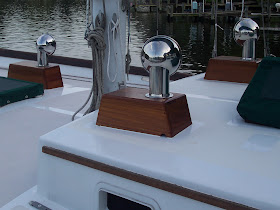Makes 4-6 servings
Chipotle Black Bean Chili
Ingredients:
½ pound ground beef (omit if you want a vegetarian dish)2 tablespoons olive oil
1 medium yellow onion, chopped
1 red bell pepper, cored, seeded, and chopped
4 garlic cloves
1 tablespoon Smoky Chili Powder blend (see recipe below)
1 tablespoon cumin
1 teaspoon paprika
½ teaspoon cinnamon
2 tablespoons canned chipotle peppers in adobo sauce*, minced (or to taste)
2 cans black beans** (I prefer Goya)
1 can diced tomatoes
1 tablespoon cider vinegar
1 cup chopped cilantro, plus extra for garnish
Salt
Garnish (optional):
Grated cheddar cheese (we like extra sharp white cheddar)
Sour cream
Preparation:
Heat a skillet over medium heat. Brown your ground beef, then transfer to a plate lined with a paper towel to blot off any excess fat.
In a large saucepan, heat the oil over medium heat. Add the onion and pepper and sauté for about 5 minutes, until softened. Add the garlic and cook for about 1 minute, until softened. Add the chili powder, cumin, paprika, cinnamon, and chipotle peppers and cook, stirring for 2 minutes, or until the seasonings are well mixed and aromatic.
Add the ground beef, cans of black beans (juice and all), diced tomatoes and cider vinegar to the saucepan. Add salt to taste (if necessary, sometimes I omit the salt altogether). Reduce heat and simmer for 1 to 2 hours, allowing the flavors to meld and the chili to thicken. Add additional salt and vinegar, if needed. Stir in cilantro (if serving immediately; otherwise, wait until just before serving). Serve garnished with additional cilantro, grated cheddar cheese, and sour cream.
Variations:
Serve over rice for a hearty meal, or mix with sour cream and use it as a dip served with chips!
Notes:
*Chipotle chilies in adobo can pack a punch, so adjust the amount used to suite your tastes. Rarely do you need an entire can for a recipe. Rather than waste the remainder of the can, transfer it to a Tupperware container and throw it in the freezer for future use. It will keep for several months in the freezer.
**If you prefer to use dried beans, soak 2 cups of dry beans (covered by about 2 inches) overnight. Drain the beans and add them to the saucepan after adding the seasoning, along with 5 cups of water. Simmer for 1 to 1 ½ hours, or until the beans are softened. Then add your browned ground beef, diced tomatoes, etc.
Smoky Chili Powder
This mixture is easily made ahead of time. Simply mix and transfer to an airtight container until you are ready to use it. We substitute this in place of regular chili powder in many recipes to spice things up a bit!
This mixture is easily made ahead of time. Simply mix and transfer to an airtight container until you are ready to use it. We substitute this in place of regular chili powder in many recipes to spice things up a bit!
Makes ½ cup
Ingredients:
2 tablespoons ground cumin
1 tablespoon chipotle chili powder
1 tablespoon chili powder
2 tablespoons dried oregano, crumbled
2 tablespoons garlic powder































